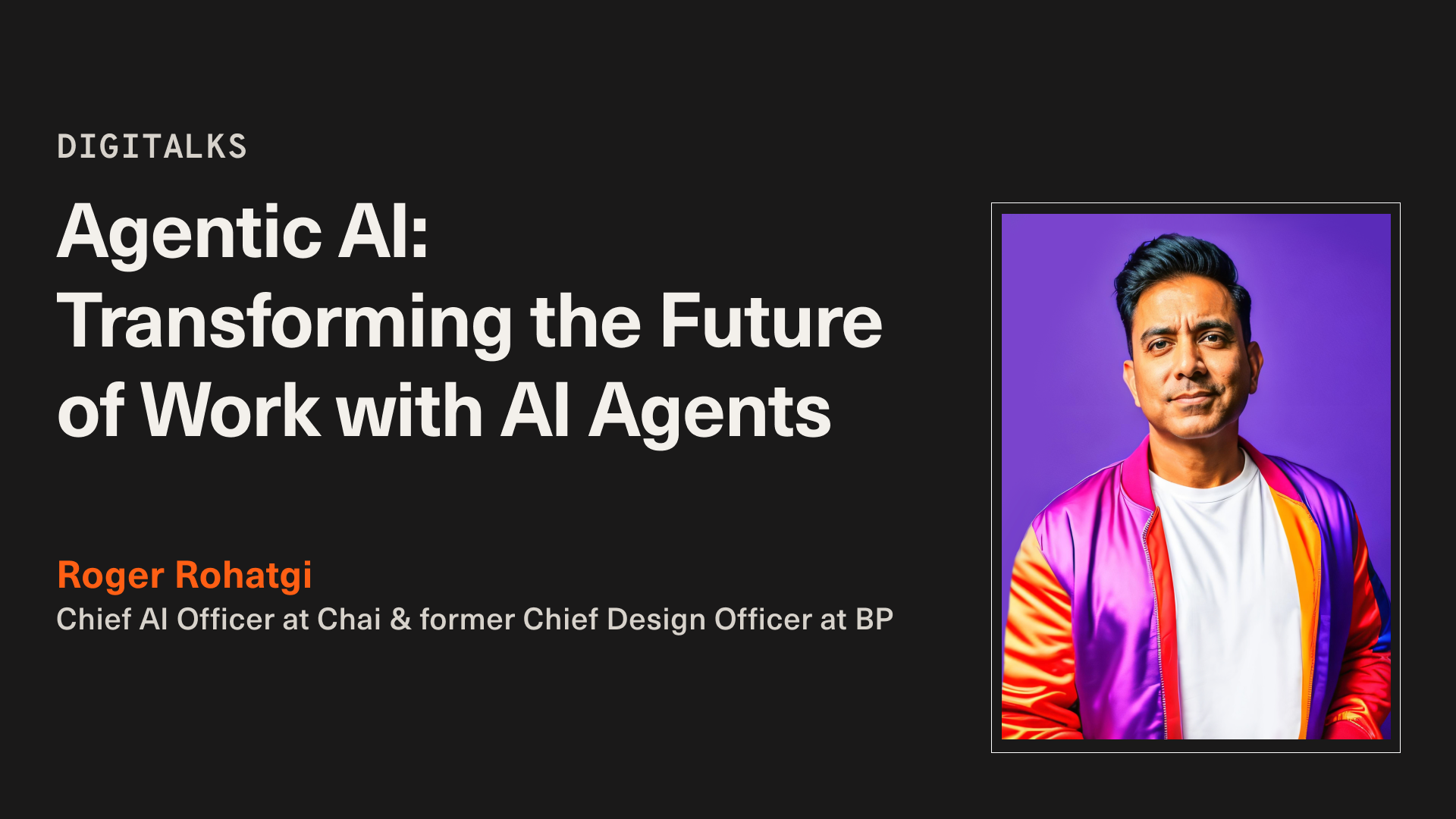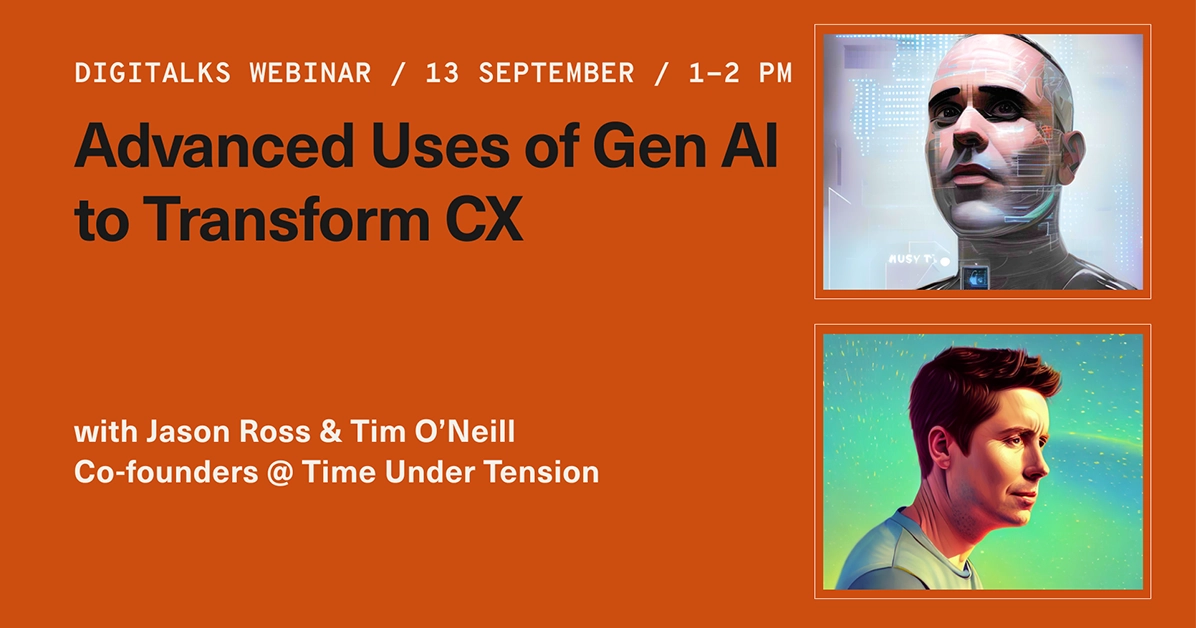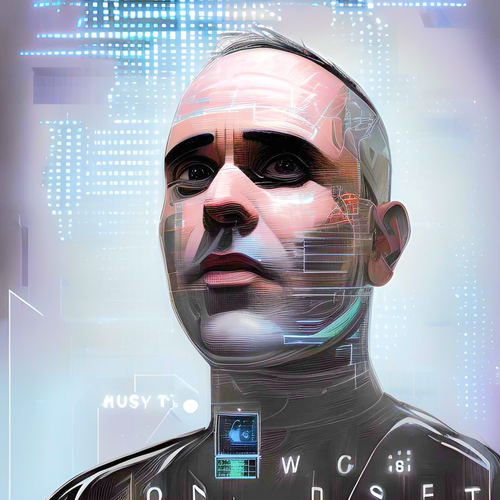Today, we’re entering the era of Agentic AI—autonomous AI Agents capable of taking initiative, making decisions, and continuously learning. These aren’t passive tools waiting for a click. They’re proactive teammates who volunteer ideas, negotiate schedules, and surface insights while we sleep. The pace of change is breathtaking, and organisations that embrace this shift early will be the ones leading the next wave of innovation.
From Generative to Agentic: The Leap Forward
Generative AI—think GPT, Midjourney, DALL‑E—captured the world’s imagination by producing text, images, and code on demand. It’s like having your own creative genie in a laptop, except instead of three wishes, you get infinite Midjourney renders of your dog as a pirate.
Generative AI is assistive and wildly creative, but it still relies on human prompting. Agentic AI goes further. These agents interpret objectives, break them into tasks, act autonomously, and iterate based on feedback. They handle ambiguity, invoke other models or APIs, and collaborate with humans as needed. This shift, from content creation to decision delegation, is already transforming entire industries.
Recently, Roger Rohatgi, Chief AI Officer at Chai, partnered with the team at Aquent Australia to host a Digitalks webinar exploring the exciting possibilities of AI Agents and their impact on the future of work. Listen to the webinar on demand below.
AI Agents in Action: Teams, Twins, and Transformation Ahhhhh!
Agentic AI integrates directly into workflows, launching tasks, adapting to real-time input, and collaborating side by side with humans. This isn’t theory or sci-fi, it’s already happening. OpenAI CEO Sam Altman predicted that by 2025, AI Agents will be fully embedded in the workforce as virtual employees. These agents might manage tasks, create content, or even lead projects. Imagine starting your day to find your AI agent has already analysed yesterday’s data, scheduled your meetings, and drafted a campaign—all tuned to your preferences. Agentic AI is evolving from novelty to necessity.
A couple of years ago, I collaborated with researchers at a few top universities to explore how humans and AI Agents might work together. At MIT, I proposed a simple visual: traditional teams looked like this—H-H-H-H-H-H. Humans working in sequence. But with AI Agents entering the workforce, we’re seeing hybrid team dynamics. First: H-H-H-H-H-A. Then: H-A-H-A-H-A. Eventually: A-A-A-A-A-H— one human orchestrating a fleet of specialised agents. What we realised is that this would mark a new model where humans move from contributors to strategic directors of AI-powered workflows.
What’s even more fascinating? Agents managing other agents—setting priorities, evaluating performance, even spawning new agents to handle niche tasks. The NVIDIA CEO Jensen Huang, described this shift by saying IT departments are becoming HR departments for AI Agents. We’ll hire, train, promote, and even “retire” agents. And soon enough, these agents might hire and review the performance of their own digital colleagues.
In a collaboration with Harvard and the design agency Fantasy, we explored the concept of Synthetic Humans—digital twins of real customers designed to reflect their preferences, behaviours, and feedback. These digital personas gave us powerful insights into how people engage with companies and experiences on an emotional level. But the project sparked a deeper realisation: if we can build intelligent, responsive replicas of our customers to better understand and serve them, why stop there? What if we created digital twins not just of our customers, but of ourselves?
Multipotentiality of AI Agents
This led me to the concept of multipotentiality, a term popularised by Emilie Wapnick to describe people with a range of interests and talents. I expanded it to mean having multiple needs, wants, skills, and goals, often limited only by time. Unless, of course, we multiply ourselves. Imagine AI versions of you—one handling virtual meetings, another managing your finances, a third running your side hustle, and yet another responding on social media. These agents don’t replace you; they extend you. In the workplace, this could make you exponentially more productive. Employers wouldn’t just be hiring you, but all the versions of you, trained on your digital DNA.
Marketing, Design, Product and Agentic Everything… Oh my!
The possibilities here are vast. While Agentic AI is often discussed in abstract terms, its most tangible impact is being felt in real-world domains, including marketing, design, product development, business operations, and customer service.
This concept is already reshaping marketing. I call this shift Multimorphic Marketing—where campaigns won’t just need to target individuals but also their digital twins. These synthetic personas reflect real behaviours, requiring campaigns to adapt messaging, creative, and timing. Brands must begin targeting not just current behavioural personas, but predictive, multiplied ones—those digital twins powered by AI. Multimorphic campaigns will tailor content to each version of a customer, adjusting messaging and timing to sub-niche needs. Think Severance— marketing to both our “innie” and our “outie”.
But first, we'll see the rise of Agentic Marketing
AI Agents will help with campaign optimisation—analysing performance in real time and tweaking copy, targeting, or spend to maximise ROI. Marketers will spend less time pulling reports and more time crafting the next big idea. AI Agents will also plan, post, and optimise content across platforms. Why manually schedule a post when a brand agent can read the room, test ten variations, and auto-adjust the budget—all before you wake up? Agentic marketing turns the static social calendar into a living, breathing intelligence system.
Just as engineers are now “vibe coding” by prompting AI to generate entire applications, marketers will soon embrace “vibe marketing.” By simply prompting a tone or emotional intent, AI will create branded assets that resonate with cultural moments, then auto-magically deploy them across every channel in your ecosystem. This evolution will even give rise to Artificial Influencers, which are fully agentic + generative or “agentive” personas with real-world clout. They’ll engage fans, influence trends, host live Q&As in AR, and even write their own scripts and responses. As the line between synthetic and real continues to blur, trust and transparency will become the new social currency. And while this starts in marketing, it spills over into everything.
AI Agents for Design
In design, generative AI is the ultimate brainstorm partner. AI Design Agents can generate dozens of variations in seconds, follow brand guidelines, and analyse behaviour to suggest improvements. We're building AI Agents that augment UX researchers, learning from friction points and suggesting layout changes in real time. Designers now guide, curate, and train their AI partners as much as they create.
Product development is moving at warp speed. AI product agents are already proposing roadmaps, testing features, and simulating product-market fit before code is written. They digest customer feedback and trends to predict what users will want next. They’re your quantum-speed PMs, running experiments in parallel. There are even product manager copilots in tools like ChatPRD.
Engineers and IT teams are also building with AI. Agents write code, run tests, and even monitor infrastructure. DevOps teams now use AI to predict system outages and auto-deploy patches before users notice. And with Cursor, Windsurf and Loveable, there is no limit to how fast apps will be developed.
Customer service? It's being reinvented.
Today’s AI Agents don’t just answer—they remember, empathise, and escalate wisely. We’re seeing it firsthand with our Voice Agents that not only sound remarkably human, capable of holding deep, helpful conversations but they can troubleshoot an issue, check account status, suggest solutions and options, schedule an appointment, negotiate pricing, offer a discount, get approval from his human manager, send follow-up information, transfer a call, and even ask me how my day is going.
AI Agents and Operations
One of the biggest transformations is happening behind the scenes in operations. AI Agents can forecast demand, negotiate deals, and reroute logistics in real time. They can build autonomous workflows and leverage computer vision to track stock, predict maintenance, purchase, ship, and close deals. Agents are able to build spreadsheet-like tables, generate charts through GenBI and even extract data from one doc and put it into another. This is business process on steroids—relentlessly efficient, and always on.
In all these use cases, one theme repeats: AI Agents are taking on repetitive, data-heavy tasks and enabling humans to focus on strategic thinking, empathy, and creativity. It's a new kind of collaboration—machine efficiency meets human intuition.
Designing AI Agents with Humans at the Centre
Technology must remain human-centred. As we welcome AI Agents into the workplace, how we design with them becomes as important as what we design for them. AI might draft a report, but a human still crafts the story. UX must be intuitive. Interactions must be empowering.
As these AI Agents take on more responsibility, they begin to influence strategic decisions, such as pricing, hiring, and customer experience. But trust doesn’t come automatically. Businesses must ensure these Agents remain explainable, transparent, and aligned with human values. Think of it like hiring a genius analyst: useful, but still accountable.
This is where human-centred AI becomes mission-critical. The most powerful AI systems in the world are worthless if they’re not usable, trustworthy, and fair. The design challenge now is not just what AI can do, but what we do to make it work with us.
We must be intentional. Transparency, inclusivity, and accountability aren't optional—they are the foundation for trust. Human-AI collaboration must be designed with care: agents should explain their reasoning, flag uncertainty, and operate within ethical boundaries.
Just like we wouldn’t hire a human employee with no moral compass, we shouldn’t deploy agents without ethical guardrails. As designers, engineers, and business leaders, we’re not just creating intelligent tools; we’re shaping intelligent relationships.
Embracing an Agentic Future of Work
So what does this all mean for the future of work?
To me, it comes down to one powerful truth: AI isn’t replacing you, it’s multiplying you. The rise of Agentic AI isn’t about automation for automation’s sake. It’s about amplification. It’s about giving every human a team of tireless, context-aware, endlessly capable digital collaborators.
But amplification without intention can lead to chaos. That’s why human-centred AI isn’t just a design principle, it’s a business imperative. We must design with people in mind: for clarity, trust, empathy, and empowerment. We must ensure these Agents don’t just act, but act in service of human values.
The most successful organisations won’t just adopt AI. They’ll redesign their cultures, workflows, and ethics to support human-AI collaboration at scale. They’ll train people to lead, guide, and curate agentic systems. They’ll embrace diversity in data, clarity in purpose, and courage in experimentation.
The future of work isn't something that just happens to us. It's something we co-create with each other and with our AI partners. As Doc Brown might say, “Your future is whatever you make it. So make it a good one.” 🚀
How to Get Started with AI Agents
Getting started with Agentic AI begins by identifying a real business need, not chasing hype, but solving a specific problem where autonomy can unlock value.
Start small: look at tasks that are repetitive, decision-heavy, or reliant on real-time data. Then ask, “What would this look like if an AI agent could handle it end-to-end?” From there, it's about designing the right interaction model, training your agent on context and goals, and integrating it into existing workflows in a way that feels natural, not disruptive. At Chai, we specialise in turning Agentic AI from concept into reality. Whether you're just exploring the possibilities or ready to pilot an AI agent in your organisation, we’re here to guide you through every step, from opportunity mapping to launch. If you’re ready to move from passive automation to proactive intelligence, let’s talk. Visit heychai.ai or drop us a note—we’d love to help you start strong.
Latest.

AI adoption failing isn’t the tech, it’s the people. How smart businesses overcome this.
Technology, Thought Leadership, Industry Trends

Temp-to-perm is the best way to hire today.
Hiring Insights

How to keep top talent: Strategies for successful onboarding
Hiring Insights, Ask Aquent, Training Resources






